Farxiga®/Forxiga® (Dapagliflozin) 10 mg, 28 film-coated tablets
$118.80
FARXIGA is a medicine used to Improve blood sugar control along with diet and exercise in adults with type 2 diabetes, Reduce the risk of hospitalization for heart failure in adults with type 2 diabetes and known cardiovascular disease or multiple cardiovascular risk factors, Reduce the risk of cardiovascular death and hospitalization for heart failure in adults with heart failure (when the heart is weak and cannot pump enough blood to the rest of your body)
Description
FARXIGA (Forxiga) is a medicine used to:
- Improve blood sugar control along with diet and exercise in adults with type 2 diabetes
- Reduce the risk of hospitalization for heart failure in adults with type 2 diabetes and known cardiovascular disease or multiple cardiovascular risk factors
- Reduce the risk of cardiovascular death and hospitalization for heart failure in adults with heart failure (when the heart is weak and cannot pump enough blood to the rest of your body)
FARXIGA should not be used to treat people with type 1 diabetes or diabetic ketoacidosis (increased ketones in your blood or urine).
Structure
1 tab .:
– dapagliflozin propanediol monohydrate 12.30 mg, in terms of dapagliflozin 10 mg
Excipients: microcrystalline cellulose 171.45 mg, anhydrous lactose 50.00 mg, crospovidone 10.00 mg, silicon dioxide 3.75 mg, magnesium stearate 2.50 mg;
tablet shell: Opadray® II yellow 10.00 mg (polyvinyl alcohol partially hydrolyzed 4.00 mg, titanium dioxide 2.35 mg, macrogol 3350 2.02 mg, talc 1.48 mg, dye iron oxide yellow 0.15 mg) …
Indications
Farxiga, indications for use
Type 2 diabetes mellitus, in addition to diet and exercise to improve glycemic control, as:
– monotherapy;
– addition to metformin therapy in the absence of adequate glycemic control for this therapy;
– starting combination therapy with metformin, if this therapy is appropriate.
Contraindications
– Increased individual sensitivity to any component of the Farxiga preparation.
– Diabetes mellitus type 1.
– Diabetic ketoacidosis.
– Renal failure of moderate to severe severity (GFR <60 ml / min / 1.73 m2) or end-stage renal failure.
– Hereditary lactose intolerance, lactase deficiency and glucose-galactose intolerance.
– Pregnancy and the period of breastfeeding.
– Children under 18 years of age (safety and efficacy have not been studied).
– Patients taking “loop” diuretics (see the section “Interaction with other drugs and other types of drug interactions”), or with a reduced volume of circulating blood, for example, due to acute diseases (such as gastrointestinal diseases).
– Elderly patients aged 75 and over (for initiation of therapy).
CAREFULLY:
severe hepatic failure, urinary tract infections, risk of decreased blood volume, elderly patients, chronic heart failure, increased hematocrit.
Method of administration and dosage
Inside, regardless of food intake.
– Monotherapy:
The recommended dose of Farxiga ™ is 10 mg once a day.
– Combination therapy:
The recommended dose of Farxiga ™ is 10 mg once a day in combination with metformin.
– Starting combination therapy with metformin:
the recommended dose of Farxiga ™ is 10 mg once a day, the dose of metformin is 500 mg once a day.
In the case of inadequate glycemic control, doses of metformin should be increased.
Application in special groups of patients.
Patients with impaired liver function.
In case of mild or moderate liver dysfunction, there is no need to adjust the dose of the drug.
For patients with severe hepatic impairment, an initial dose of 5 mg is recommended. With good tolerance, the dose can be increased to 10 mg (see sections “Pharmacokinetics” and “Special instructions”).
Patients with impaired renal function.
The effectiveness of dapagliflozin depends on renal function, in patients with moderate renal impairment, the effectiveness of treatment is reduced, and in patients with severe impairment, it is most likely absent.
The drug Farxiga ™ is contraindicated in patients with moderate to severe renal insufficiency (creatinine clearance (CC)) In case of mild renal impairment, there is no need to adjust the dose of the drug.
Children.
The safety and efficacy of dapagliflozin in patients under 18 years of age has not been studied (see section “Contraindications”).
Elderly patients.
Elderly patients do not need to adjust the dose of the drug. However, when choosing a dose, it should be borne in mind that in this category of patients, impaired renal function and the risk of a decrease in circulating blood volume (BCC) are more likely. Since the clinical experience of using the drug in patients 75 years of age and older is limited, it is contraindicated to start therapy with dapagliflozin in this age group.
Application during pregnancy and lactation
Due to the fact that the use of dapagliflozin during pregnancy has not been studied, the drug Farxiga is contraindicated during pregnancy.
If pregnancy is diagnosed, dapagliflozin therapy should be discontinued.
It is not known whether dapagliflozin and / or its inactive metabolites passes into breast milk.
The risk to newborns / babies cannot be excluded.
Dapagliflozin is contraindicated during breastfeeding.
Side effects
An overview of the security profile
The pre-planned analysis of the pooled data included the results of 12 placebo-controlled studies in which 1193 patients received 10 mg dapagliflozin and 1393 patients received placebo.
The overall incidence of adverse events (short-term therapy) in patients taking dapagliflozin 10 mg was similar to that in the placebo group.
The number of adverse events leading to treatment withdrawal was small and balanced between treatment groups. The most common adverse events leading to discontinuation of therapy with dapagliflozin at a dose of 10 mg, there was an increase in the concentration of creatinine in the blood (0.4%), urinary tract infections (0.3%), nausea (0.2%), dizziness (0.2%) and rash (0 , 2%). One patient taking dapagliflozin developed an adverse event in the liver with a diagnosis of drug-induced hepatitis and / or autoimmune hepatitis.
The most common adverse reaction was hypoglycemia, the development of which depended on the type of basic therapy used in each study. The incidence of episodes of mild hypoglycemia was similar in the treatment groups, including placebo.
List of adverse reactions in the form of a table
The following are adverse reactions reported in placebo-controlled clinical trials. None of them were dose-dependent.
The frequency of adverse reactions is presented in the following gradation: very often (≥1 / 10), often (≥1 / 100, Adverse reactions in placebo-controlled studies (a).
Infections and invasions: Often * – Vulvovaginitis, balanitis and similar infections of the genital organs (b), (c). Urinary tract infection (b). Uncommon ** – Vulvovaginal itching.
Metabolic and nutritional disorders: Very often – Hypoglycemia (when used in combination with a sulfonylurea derivative or insulin) (b). Uncommon ** – Decreased BCC (b), (e) Thirst.
From the gastrointestinal tract: Uncommon ** – Constipation.
Skin and subcutaneous tissue disorders: Uncommon ** – Increased sweating.
Musculoskeletal and connective tissue disorders: Often * – Back pain.
Disorders of the kidneys and urinary tract: Often * – Dysuria, Polyuria (d). Uncommon ** – Nocturia.
Laboratory and instrumental data: Often * – Dyslipidemia (f), Increased hematocrit (g). Uncommon ** – Increased concentration of creatinine in the blood. Increase in the concentration of urea in the blood.
(a) – The table presents data on the use of the drug up to 24 weeks (short-term therapy), regardless of the intake of an additional hypoglycemic drug.
(b) – See the appropriate subsection below for more information.
(c) – Vulvovaginitis, balanitis, and similar genital infections include, for example, the following predefined preferred terms: vulvovaginal fungal infection, vaginal infection, balanitis, fungal infection of the genital organs, vulvovaginal candidiasis, vulvovaginitis, candidal balanitis, genital candidiasis, genital infection , genital infection in men, penile infection, vulvitis, bacterial vaginitis, vulvar abscess.
(d) – Polyuria includes the preferred terms: pollakiuria, polyuria, and increased urine output.
(e) – Decrease in BCC includes, for example, the following predefined preferred terms: dehydration, hypovolemia, arterial hypotension.
(f) – The average change in the following indicators as a percentage of baseline values in the dapagliflozin 10 mg group and the placebo group, respectively, was: total cholesterol 1.4% versus – 0.4%; cholesterol – HDL 5.5% versus 3.8%; cholesterol – LDL 2.7% versus 1.9%; triglycerides – 5.4% versus – 0.7%.
(g) – The mean change in hematocrit from baseline was 2.15% in the dapagliflozin 10 mg group versus -0.40% in the placebo group.
* Reported in ≥2% of patients taking dapagliflozin at a dose of 10 mg, and ≥1% more often than in the placebo group.
** Reported in ≥0.2% of patients and ≥0.1% more often and in a greater number of patients (at least 3) in the dapagliflozin 10 mg group compared with the placebo group, regardless of the intake of an additional hypoglycemic drug.
Description of selected adverse reactions:
Hypoglycemia.
The incidence of hypoglycemia was dependent on the type of basic therapy used in each study. In studies of dapagliflozin as monotherapy, combination therapy with metformin for up to 102 weeks, the incidence of episodes of mild hypoglycemia was similar (see Table: Decreased BCC.
Adverse reactions associated with a decrease in BCC (including reports of dehydration, hypovolemia, or arterial hypotension) were noted in 0.8% and 0.4% of patients taking dapagliflozin 10 mg and placebo, respectively; serious reactions have been noted in vulvovaginitis, balanitis and similar infections of the genital organs.
Vulvovaginitis, balanitis and similar infections of the genital organs were observed in 4.8% and 0.9% of patients taking dapagliflozin 10 mg and placebo, respectively. Most infections were mild to moderate; the initial course of standard therapy was effective, and therefore patients rarely stopped taking dapagliflozin. These infections developed more often in women (6.9% and 1.5% when using dapagliflozin and placebo, respectively), and in patients with a history of such infections, they more often recurred.
Urinary tract infections.
Urinary tract infections were more common with dapagliflozin 10 mg than with placebo (4.3% versus 3.7%, respectively; see section “Special instructions”). Most infections were mild to moderate; the initial course of standard therapy was effective, and therefore patients rarely stopped using dapagliflozin. These infections were more common in women, and in patients with a history of such infections, they were more likely to recur.
Parathyroid hormone (PTH).
There was a slight increase in serum PTH concentration, and to a greater extent in patients with higher baseline PTH concentrations. Bone mineral density studies in patients with normal renal function or mild renal impairment showed no bone loss within one year of therapy.
Malignant tumors.
In clinical trials, the overall proportion of patients with malignant or unspecified tumors was similar in the dapagliflozin group (1.47%) and the placebo / comparator group (1.35%). According to animal studies, the drug did not show carcinogenic or mutagenic properties. When considering the development of tumors of various organ systems, the relative risk associated with dapagliflozin was higher than 1 for some tumors (bladder, prostate, breast) and less than 1 for others (for example, blood and lymphatic system, ovaries, urinary system) , in general, without the increased risk of tumor development associated with dapagliflozin.
The increased / decreased risk was not statistically significant for any organ system. Given the lack of information on the development of tumors in preclinical studies, as well as the short latency period between the first exposure of the drug and the diagnosis of the tumor, a causal relationship is assessed as unlikely. Since the numerical imbalance of breast, bladder and prostate tumors requires special attention, the study of this issue will be continued within the framework of post-registration studies.
Elderly patients (≥65 years old).
Adverse reactions associated with impaired renal function or renal failure were reported in 2.5% of patients receiving dapagliflozin, and in 1.1% of patients receiving placebo in the group of patients ≥65 years of age (see section “Special instructions”). The most common adverse reaction associated with impaired renal function was an increase in serum creatinine concentration. Most of these reactions were transient and reversible. Among patients aged ≥65 years, a decrease in BCC, most often recorded as arterial hypotension, was noted in 1.5% and 0.4% of patients taking dapagliflozin and placebo, respectively (see section “Special instructions”).
Special instructions
Use in patients with impaired renal function.
The efficacy of dapagliflozin depends on renal function, and this efficacy is reduced in patients with moderate renal failure and is probably absent in patients with severe renal impairment (see section “Dosage and Administration”). Among patients with moderate renal insufficiency (CC who received placebo. The drug Farxiga ™ is contraindicated in patients with moderate or severe renal impairment (CC It is recommended to monitor renal function as follows:
– before the start of therapy with dapagliflozin and at least once a year thereafter (see sections “Dosage and Administration”, “Side Effects”, “Pharmacodynamics” and “Pharmacokinetics”);
– before you start taking concomitant medications that can reduce kidney function, and periodically thereafter;
– in case of renal dysfunction, close to moderate severity, at least 2-4 times a year. With a decrease in renal function below the CC value Use in patients with impaired liver function In clinical studies, limited data on the use of the drug in patients with impaired liver function have been obtained. The exposure of dapagliflozin is increased in patients with severe liver dysfunction (see sections “Dosage and Administration”, “With care” and “Pharmacokinetics”).
Use in patients at risk of decreased blood volume, arterial hypotension and / or electrolyte imbalance.
In accordance with the mechanism of action, dapagliflozin enhances diuresis, accompanied by a slight decrease in blood pressure (see section “Pharmacodynamics”). The diuretic effect may be more pronounced in patients with very high blood glucose concentrations.
Dapagliflozin is contraindicated in patients taking “loop” diuretics (see section “Interaction with other drugs and other types of drug interactions”), or in patients with reduced BCC, for example, due to acute diseases (such as gastrointestinal diseases).
Caution should be exercised in patients for whom dapagliflozin-induced lowering of blood pressure may pose a risk, for example, in patients with a history of cardiovascular disease, in patients with a history of arterial hypotension receiving antihypertensive therapy, or in the elderly patients
When taking dapagliflozin, careful monitoring of the BCC state and electrolyte concentration (for example, physical examination, blood pressure measurement, laboratory tests, including hematocrit) is recommended against the background of concomitant conditions that can lead to a decrease in the BCC.
With a decrease in the BCC, it is recommended to temporarily stop taking dapagliflozin until this condition is corrected (see the “Side Effects” section).
Urinary tract infections.
When analyzing the pooled data on the use of dapagliflozin up to 24 weeks, urinary tract infections were more often observed with the use of dapagliflozin at a dose of 10 mg compared with placebo (see section “Side effects”).
The development of pyelonephritis was noted infrequently, with a similar frequency in the control group.
The excretion of glucose by the kidneys may be accompanied by an increased risk of developing urinary tract infections, therefore, when treating pyelonephritis or urosepsis, the possibility of temporarily discontinuing therapy with dapagliflozin should be considered (see section “Side effects”).
Elderly patients.
Elderly patients are more likely to have impaired renal function and / or the use of antihypertensive drugs that may affect renal function, such as angiotensin-converting enzyme (ACE) inhibitors and angiotensin II receptor type 1 (ARA) antagonists.
For elderly patients, the same recommendations are applicable for impaired renal function, as for all patient populations (see sections “Dosage and Administration”, “Side effects” and “Pharmacodynamics”).
In the group ≥65 years, a greater proportion of patients treated with dapagliflozin developed adverse reactions associated with impaired renal function or renal failure compared with placebo. The most common adverse reaction associated with impaired renal function was an increase in serum creatinine concentration, most of the cases were transient and reversible (see the “Side Effects” section).
In elderly patients, the risk of a decrease in BCC may be higher, and diuretics are more likely to be used. Among patients aged ≥65 years, a greater proportion of patients who received dapagliflozin had adverse reactions associated with a decrease in BCC (see section “Side Effects”).
The experience of using the drug in patients aged 75 years and older is limited.
It is contraindicated to start therapy with dapagliflozin in this population (see sections “Dosage and Administration” and “Pharmacokinetics”).
Chronic heart failure.
The experience of using the drug in patients with chronic heart failure of functional class I-II according to NYHA classification is limited, and during clinical and research studies dapagliflozin was not used in patients with chronic heart failure of functional class III-IV according to NYHA.
Increase in hematocrit value When using dapagliflozin, an increase in hematocrit was observed (see the “Side effects” section), and therefore caution should be exercised in patients with an increased hematocrit value.
Assessment of the results of urine analysis.
Due to the mechanism of action of the drug, the results of urinalysis for glucose in patients taking Farxiga ™ will be positive.
INFLUENCE ON ABILITY TO DRIVE VEHICLES AND MECHANISMS
Studies to study the effect of dapagliflozin on the ability to drive vehicles and mechanisms have not been conducted.
Interaction
Pharmacodynamic interaction.
Diuretics
Dapagliflozin can enhance the diuretic effect of thiazide and loop diuretics and increase the risk of dehydration and arterial hypotension (see section “Special instructions”).
Pharmacokinetic interaction.
Dapagliflozin metabolism is mainly mediated by glucuronide conjugation by UGT1A9. During in vitro studies, dapagliflozin did not inhibit cytochrome P450CYP1A2, CYP2A6, CYP2B6, CYP2C8, CYP2C9, CYP2C19, CYP2D6, CYP3A4 isoenzymes, and did not induce CYP1A2, CYP3A4 isoenzymes. In this regard, the effect of dapagliflozinan is not expected to affect the metabolic clearance of concomitant drugs that are metabolized by these isoenzymes.
The effect of other drugs on dapagliflozin.
Interaction studies involving healthy volunteers, mainly taking a single dose of the drug, showed that metformin, pioglitazone, sitagliptin, glimepiride, voglibose, hydrochlorothiazide, bumetanide, valsartan or simvastatin did not affect the pharmacokinetics of dapagliflozin.
After the combined use of dapagliflozin and rifampicin, an inducer of various active transporters and enzymes that metabolize drugs, a decrease in systemic exposure (AUC) of dapagliflozin by 22% was noted, in the absence of a clinically significant effect on the daily excretion of glucose by the kidneys. It is not recommended to adjust the dose of the drug. No clinically significant effect is expected when used with other inducers (eg, carbamazepine, phenytoin, phenobarbital).
After the combined use of dapagliflozin and mefenamic acid (a UGT1A9 inhibitor) showed a 55% increase in the systemic exposure of dapagliflozin, but without a clinically significant effect on the daily excretion of glucose by the kidneys. It is not recommended to adjust the dose of the drug.
The effect of dapagliflozin on other drugs.
In interaction studies involving healthy volunteers, mainly taking a single dose of the drug, dapagliflozin did not affect the pharmacokinetics of metformin, pioglitazone, sitagliptin, glimepiride, hydrochlorothiazide, bumetanide, valsartan, digoxin (P-gp substrate, S-warfarin isoenzyme CYP2C9), or on the anticoagulant effect, assessed by the International Normalized Ratio (INR).
The use of a single dose of 20 mg dapagliflozin and simvastatin (a substrate of the isoenzyme CYP3A4) led to an increase of 19% in the AUC of simvastatin and 31% of the AUC of simvastatin. Increased exposure to simvastatin and simvastatinic acid is not considered clinically significant.
Other interactions.
The effect of smoking, diet, herbal medicine and alcohol consumption on the pharmacokinetic parameters of dapagliflozin has not been studied.
STORAGE CONDITIONS
STORE AT A TEMPERATURE NOT EXCEEDING 30 ° C.
KEEP OUT OF THE REACH OF CHILDREN!
SHELF LIFE – 3 YEARS
DO NOT USE AFTER THE EXPIRATION DATE.





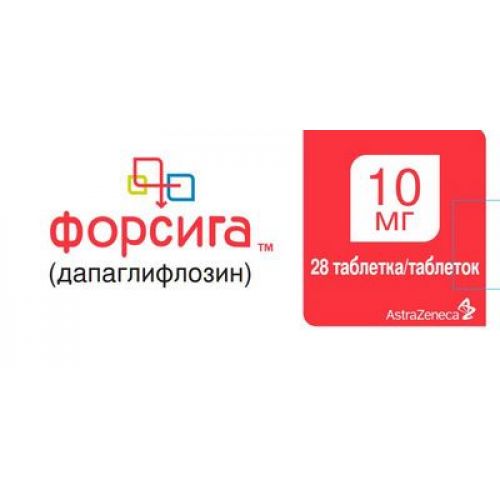
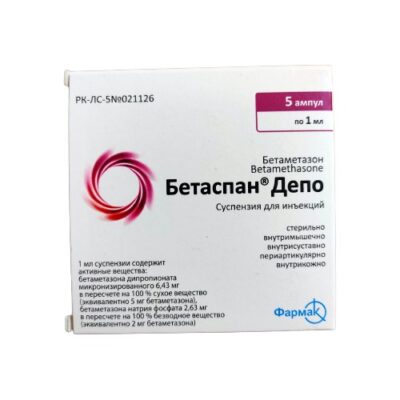

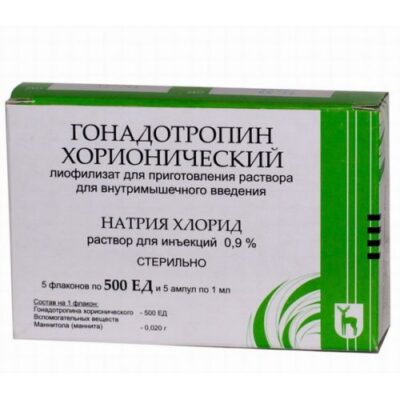
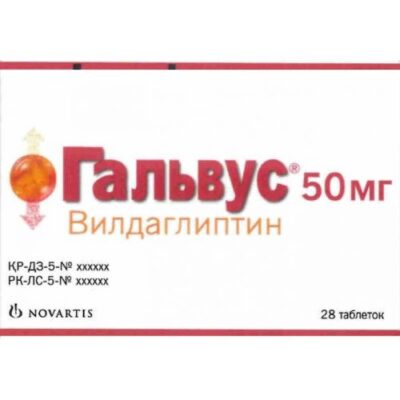
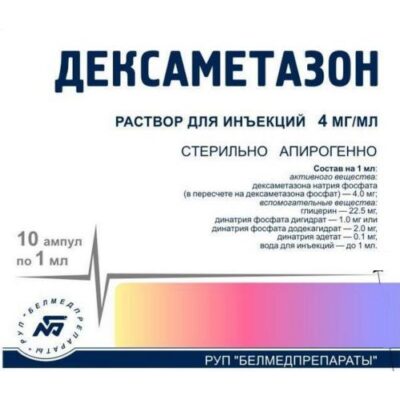

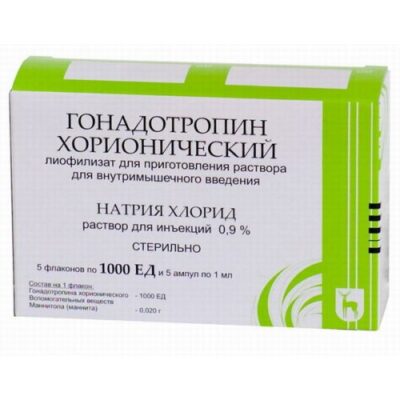

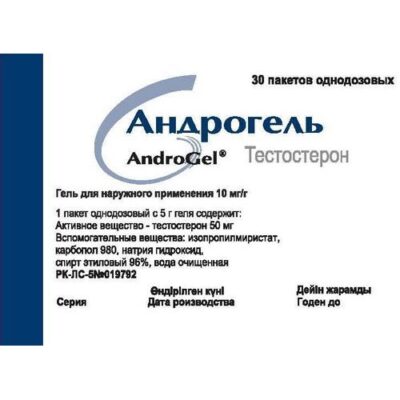
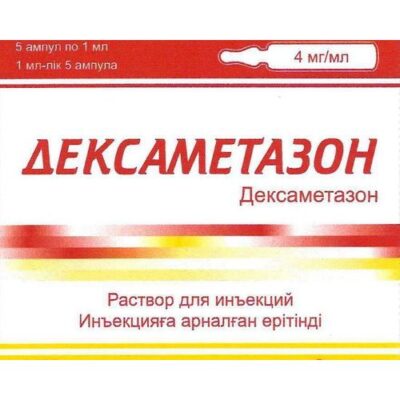






Reviews
There are no reviews yet.